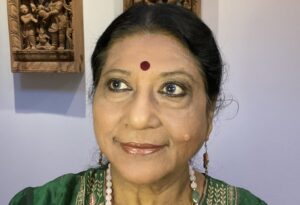Hema Rajagopalan, Artistic Director of Natya Dance Theatre talks about the changing trends and dynamics in the world of Indian classical dance

The term classical stands for something that has been developed over a long time with a keen sense adhering to aesthetic principles and traditions. Creativity is at the very core of all our Indian Classical arts and springs from the roots, like water from a spring flowing in a continuous evolving stream. The various manifestations are bound by parameters laid down by traditions deeply connected to the art form’s reference points. Artistes must not create newness but must find them.
Wanting to present something new has become trendy. We see a lot of fresh elements that add to raising the aesthetic enjoyment of the Rasika but some others that simply take away that quality.
Thematic presentations
Thematic solo performances of the Margam, a new trend has now become a norm. This can be challenging to create a performance with variety but definitely creates an interest in the audience. The traditional margam is often replaced these days by secular content on various topics.
Choreography
Since the mid nineties dance dramas and thematic group productions have engaged more audiences than a solo performance. Even pada varnams and slow paced padams are being presented as group choreography. While such presentations offer a fresh look and could be good, they often take away the depth of Abhinaya portrayed by soloists. Dancers are presenting works on secular themes and social issues like climate change, water scarcity or the plight of today’s farmers, intending to connect with diverse audiences to make a difference to the world.
The use of space, geometry and creative movement vocabulary is being given more prominence and this certainly enhances the artistic quality.
Music
Musical accompaniment has been evolving. New trends being the addition of western instruments like the Drums, Saxophone and Piano. Music directors are incorporating more orchestration which seems to appeal to today’s audiences.
Even if movements lose integrity, Nritta or pure dance performed at a high speed is commended. Introduction of silences, voice overs, prolonging emotions, creating more drama in lengthy items like a Varnam, are new ways of presenting content, sometimes very engaging.
Props/ Sets/ Lighting
The use of a variety of objects as props to express has become popular. Productions have come a long way by way of sets whether projected on a screen or on the floor including dancers sometimes interacting with those projected images/ videos etc.
Lighting: From simple general wash for a solo performance, it has now become very necessary to involve a lighting designer who adds new dimensions to the content. Whether it is the Haze, LED lights, overhead spots or moving light that creates a path, the dancer seems to depend a whole lot on lighting.
To summarize, I want to say that changes are very necessary in every aspect of the performing arts but we need to maintain a balance keeping in mind symmetry, harmony and rhythm in order to taste the beauty of Classical Indian Dance.









